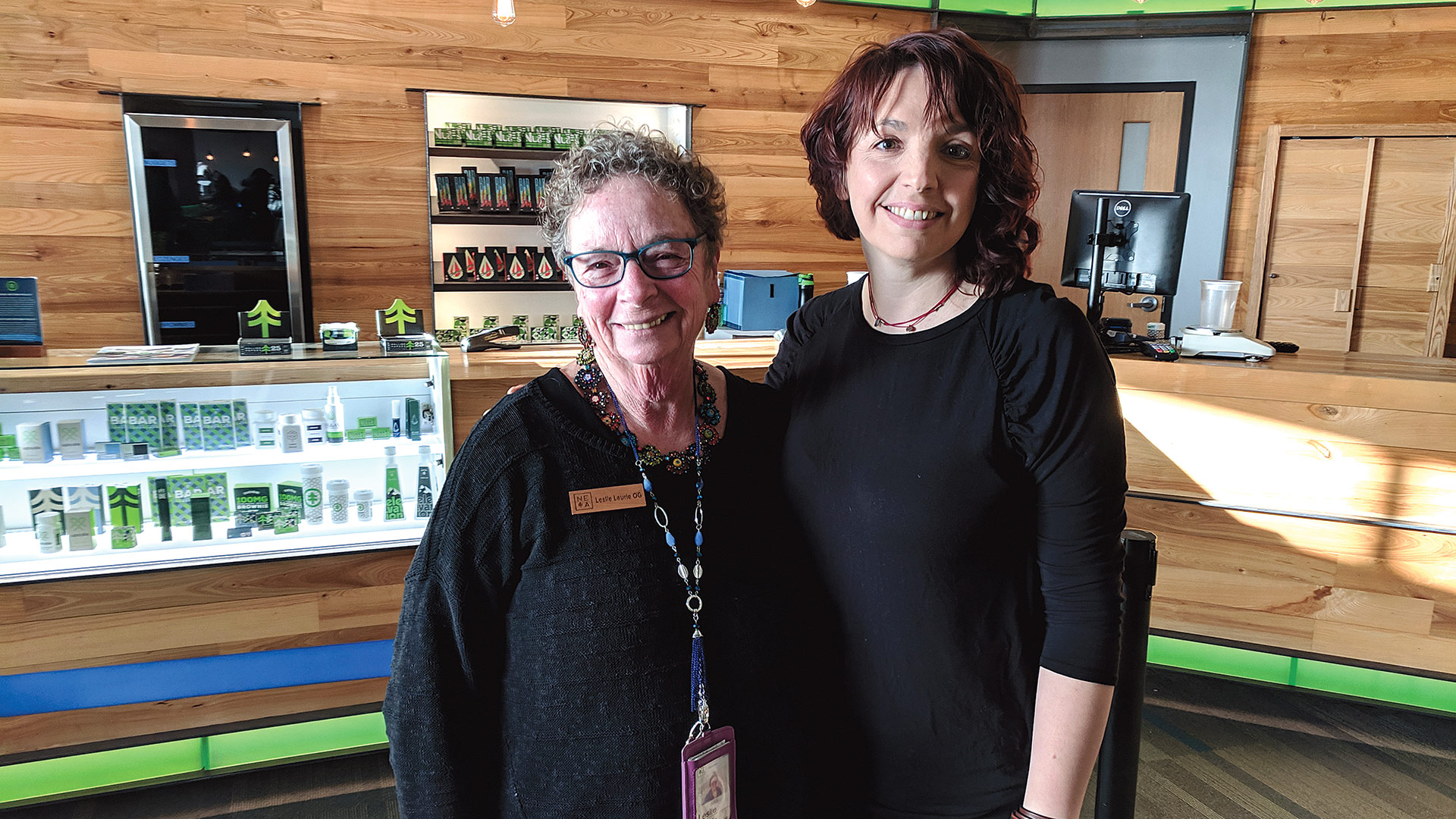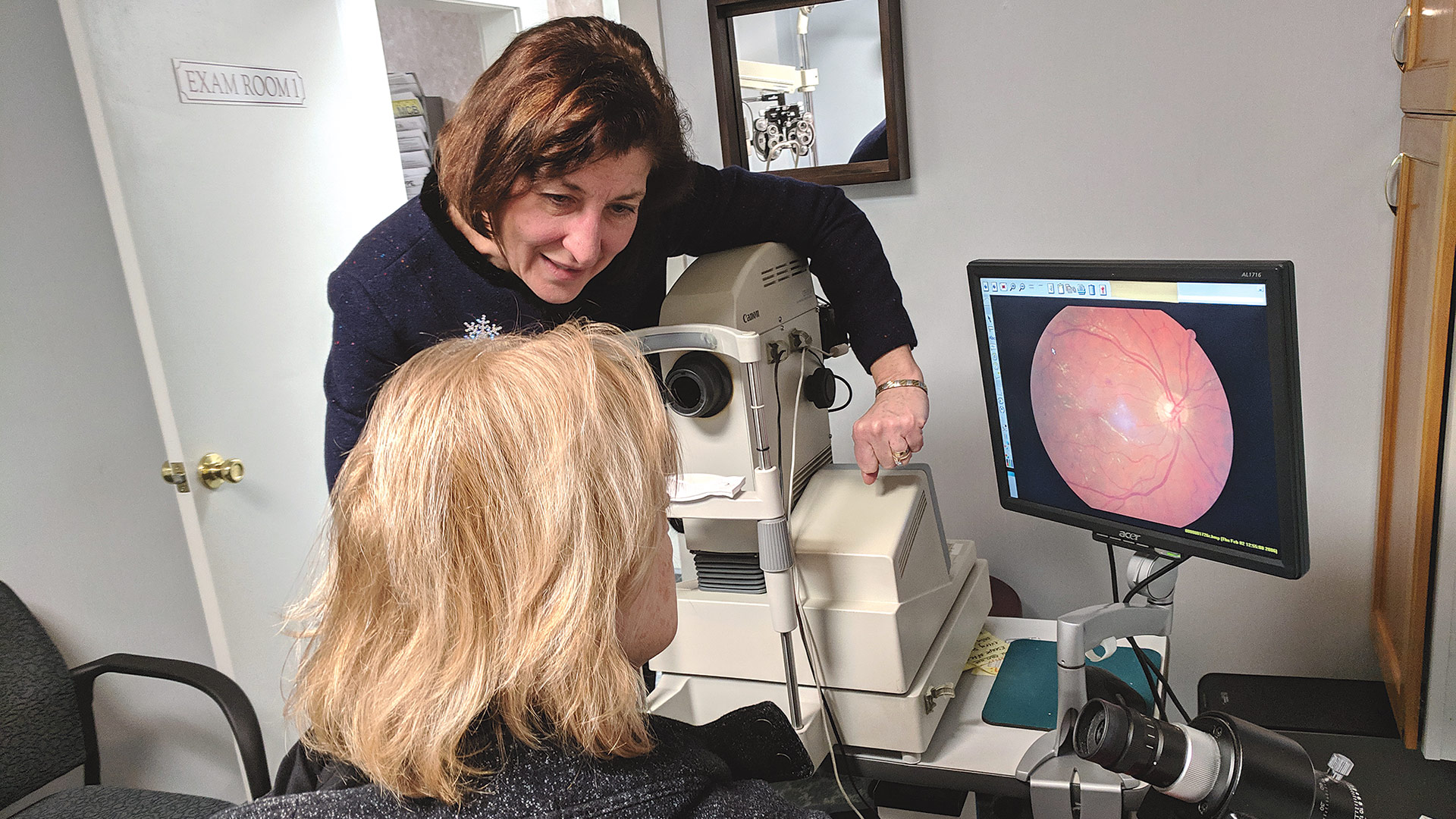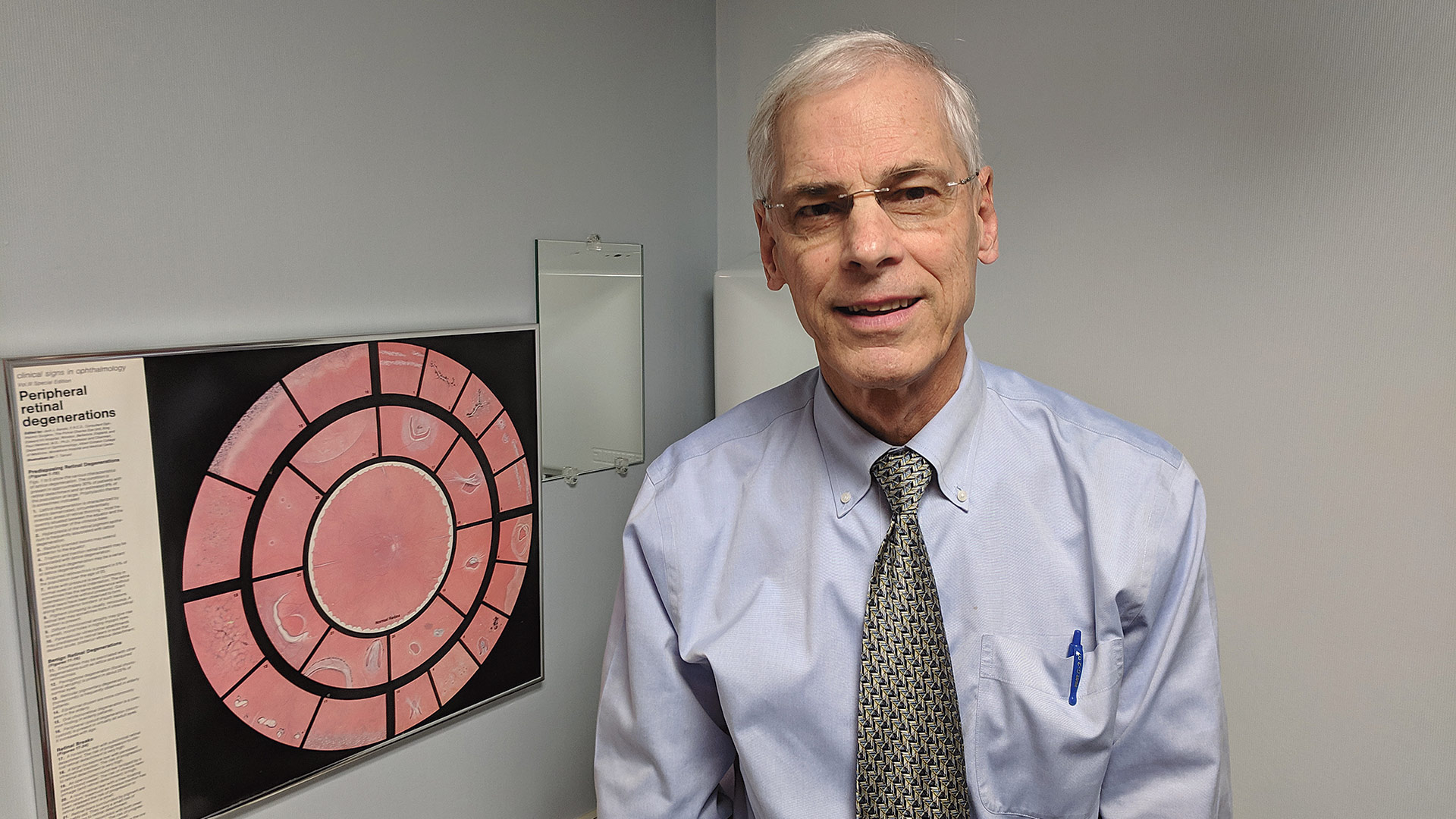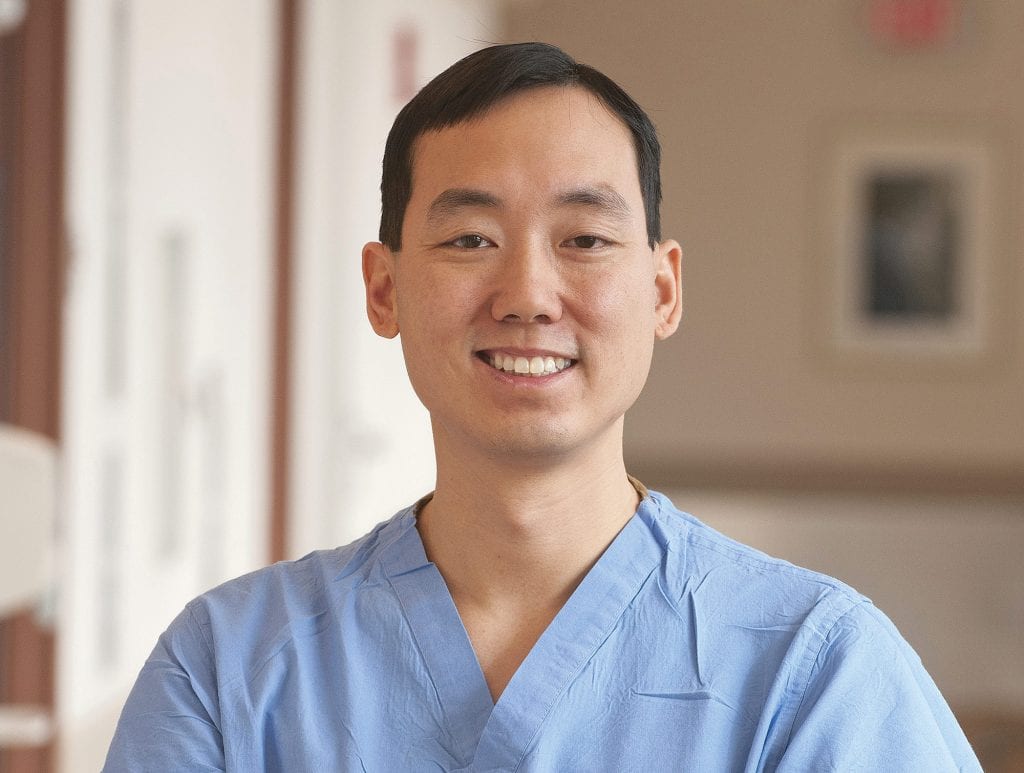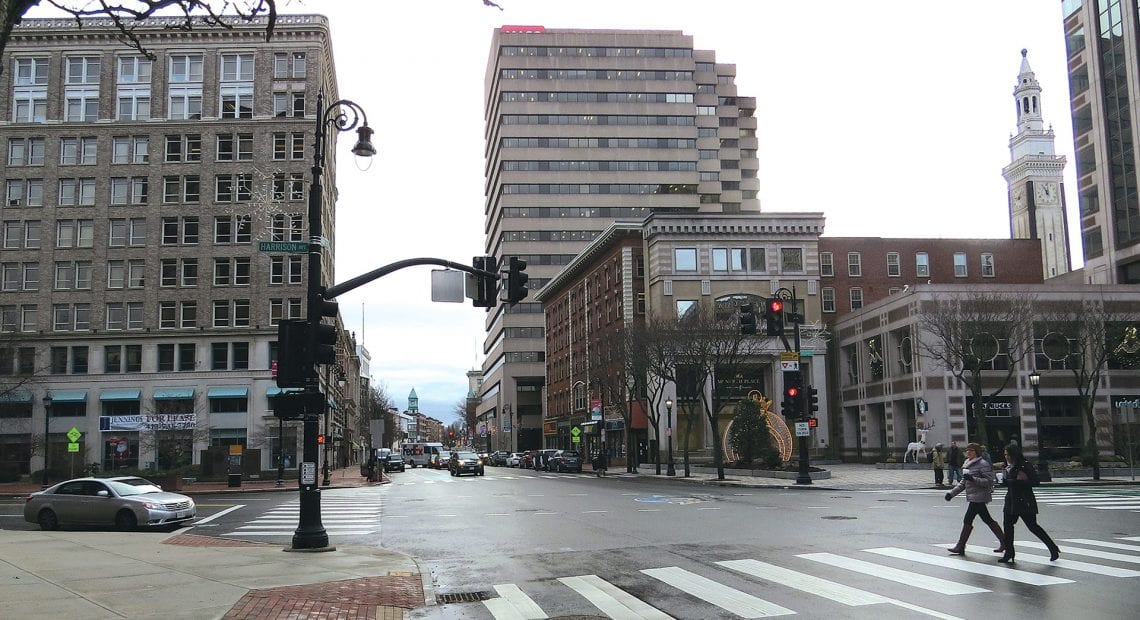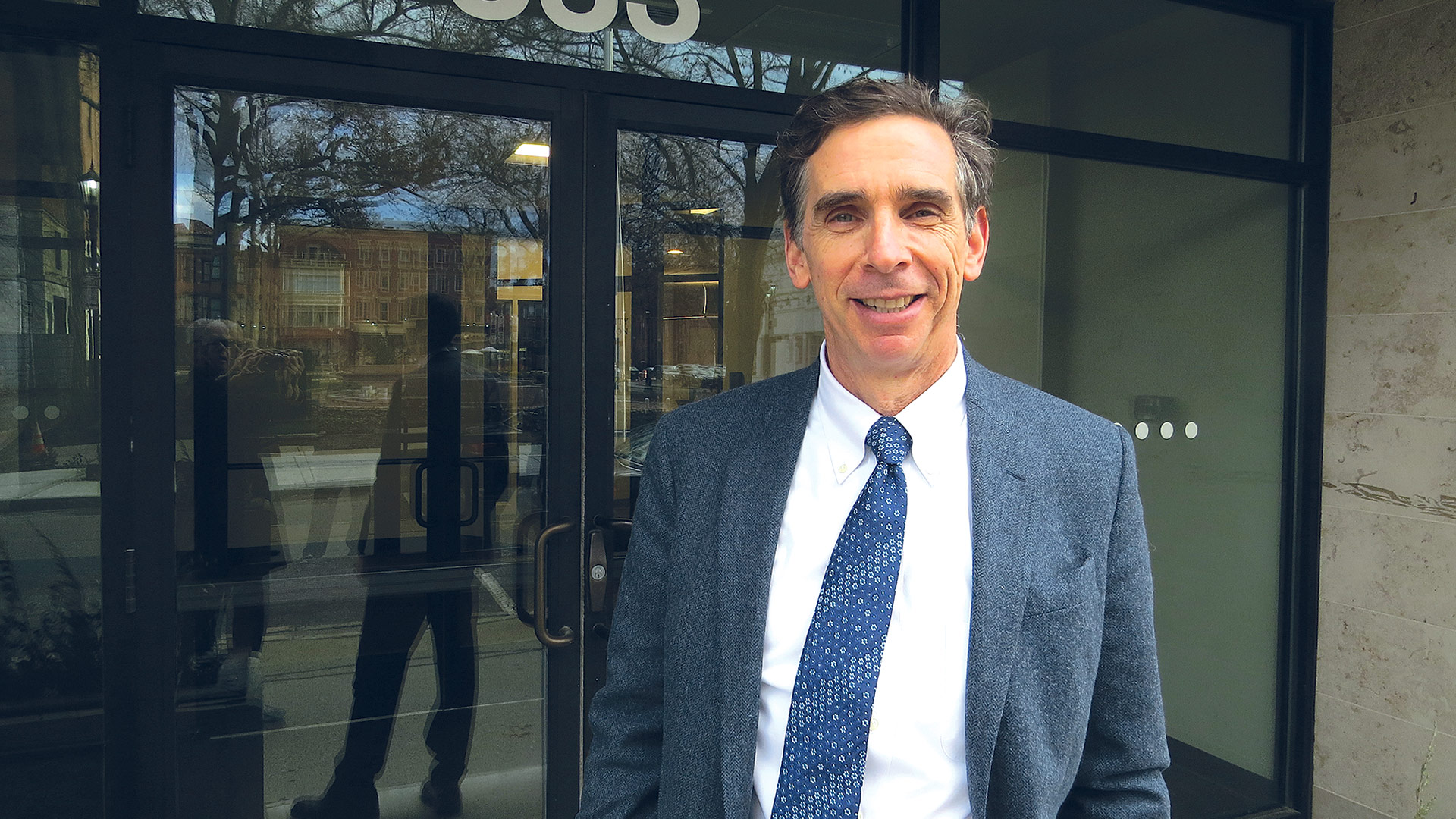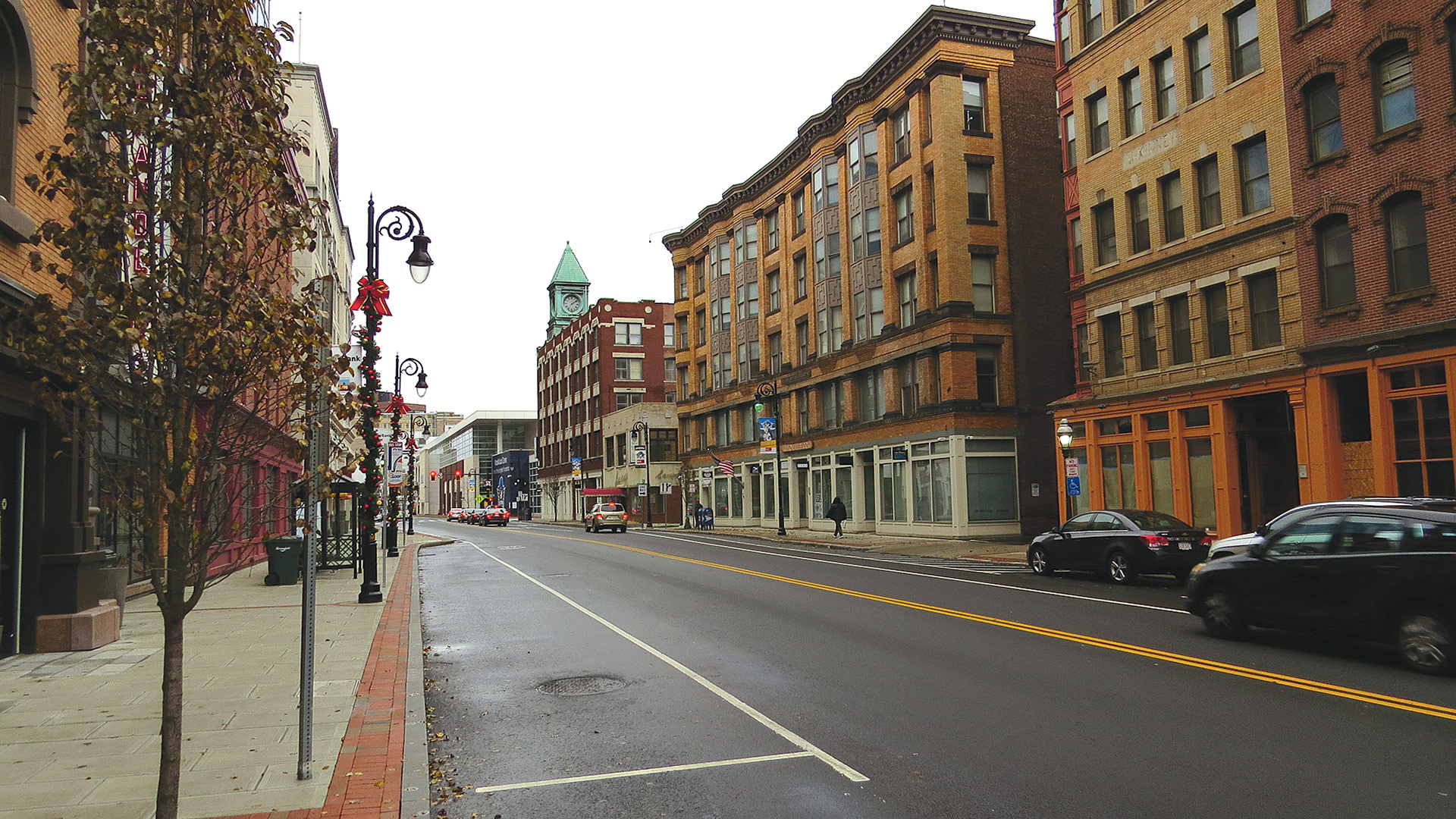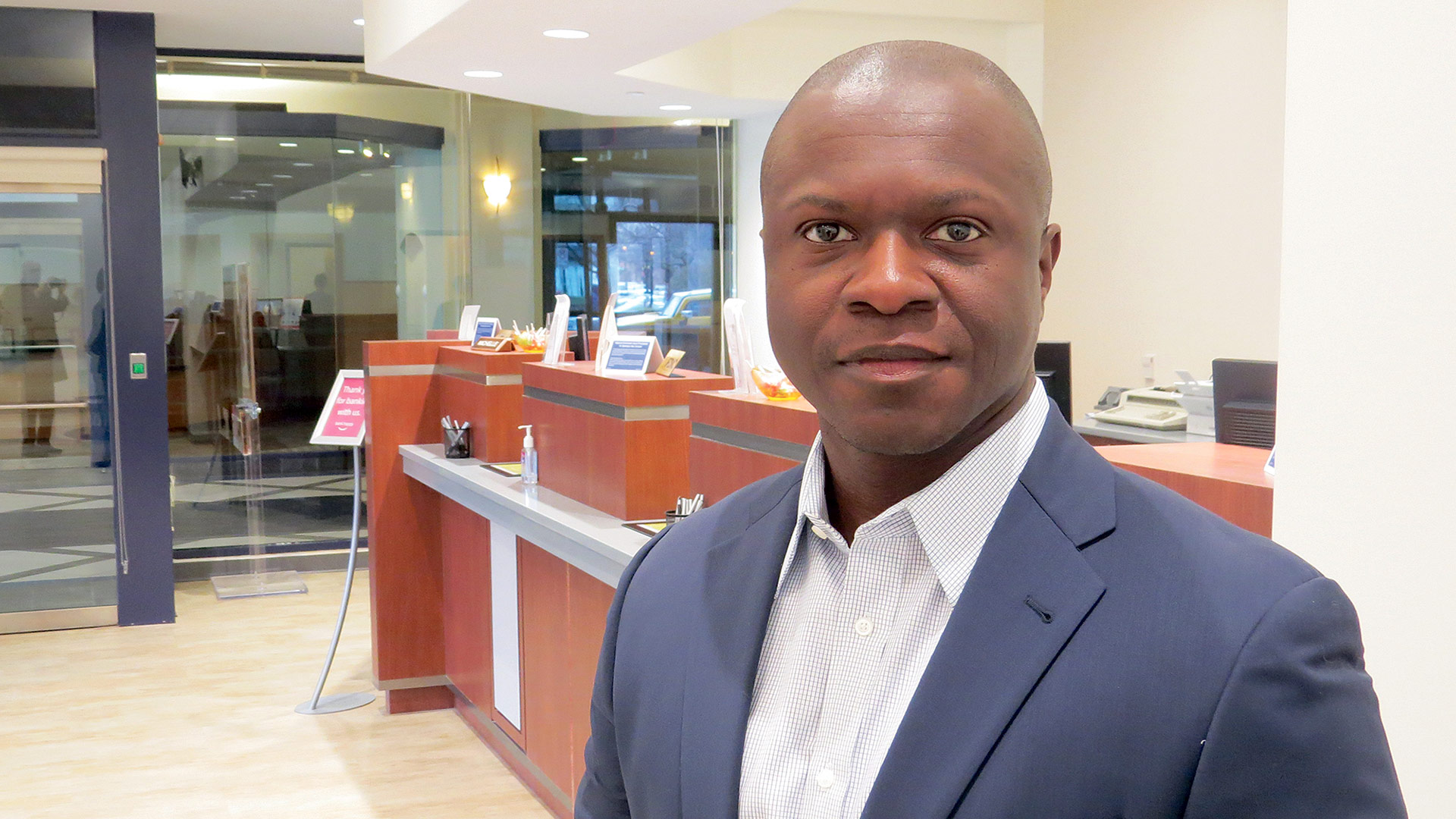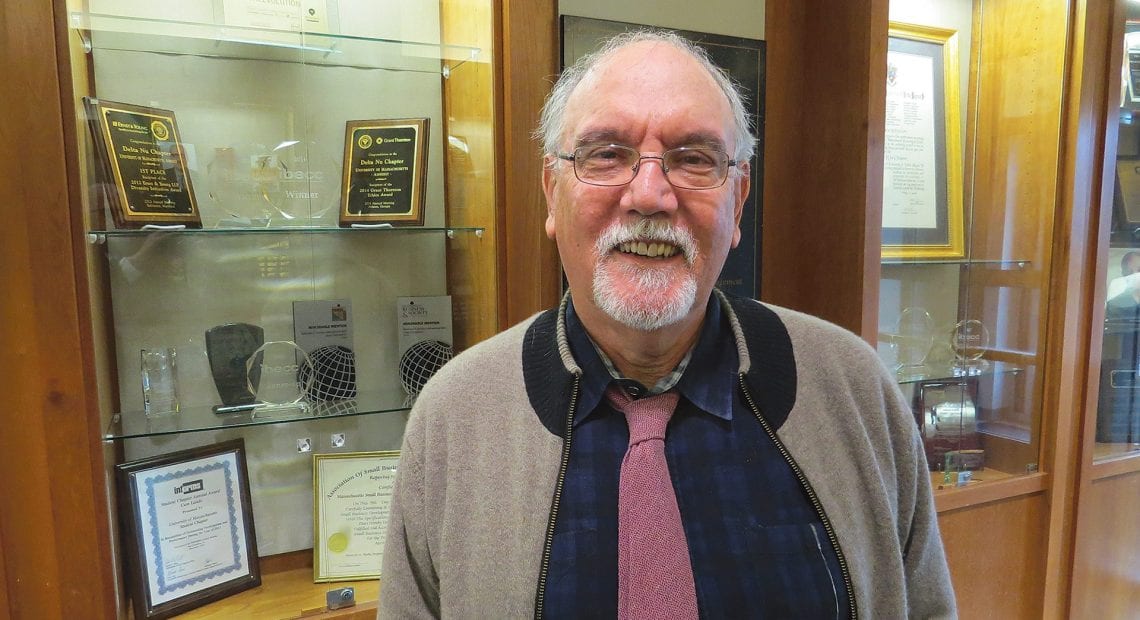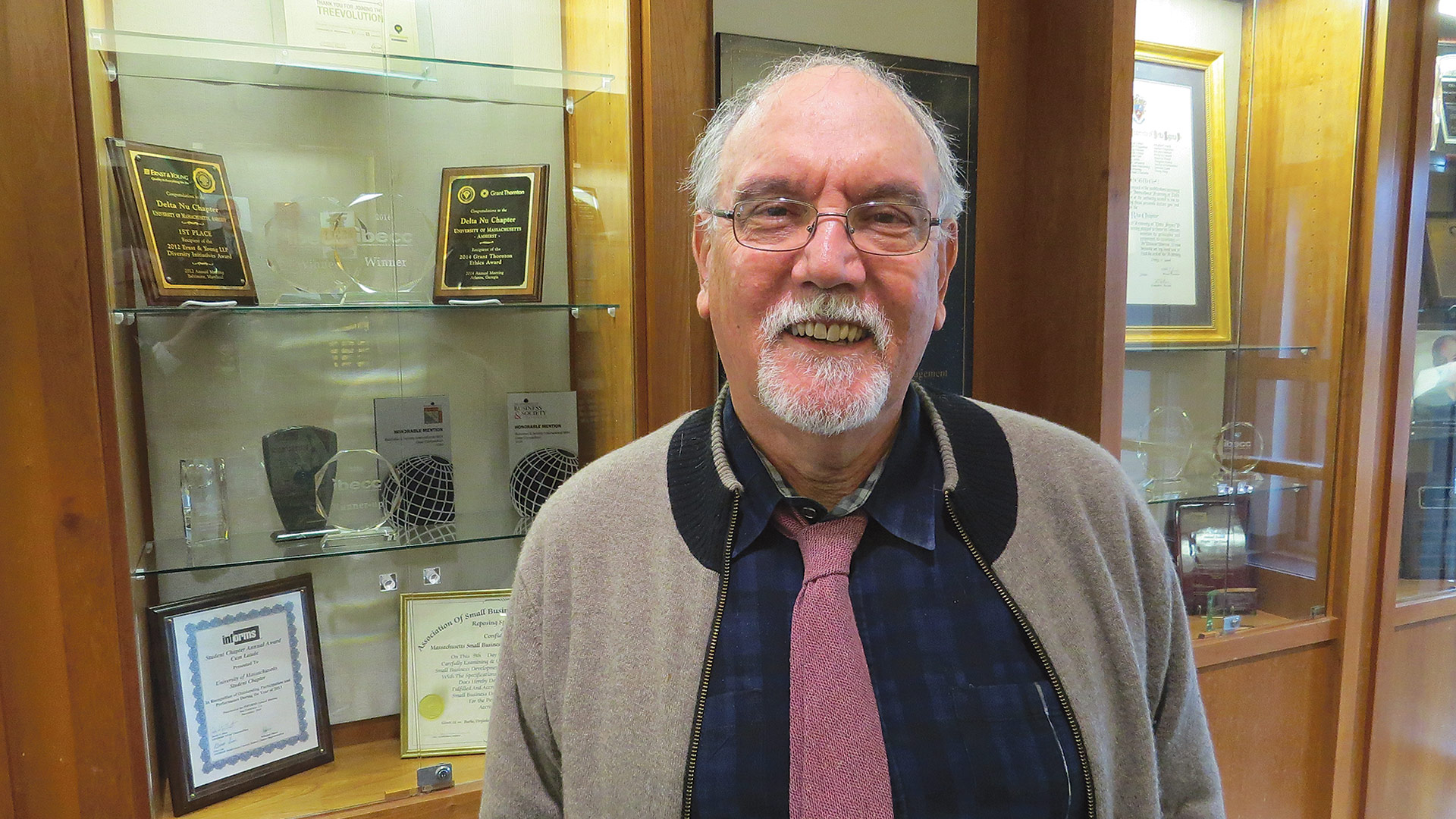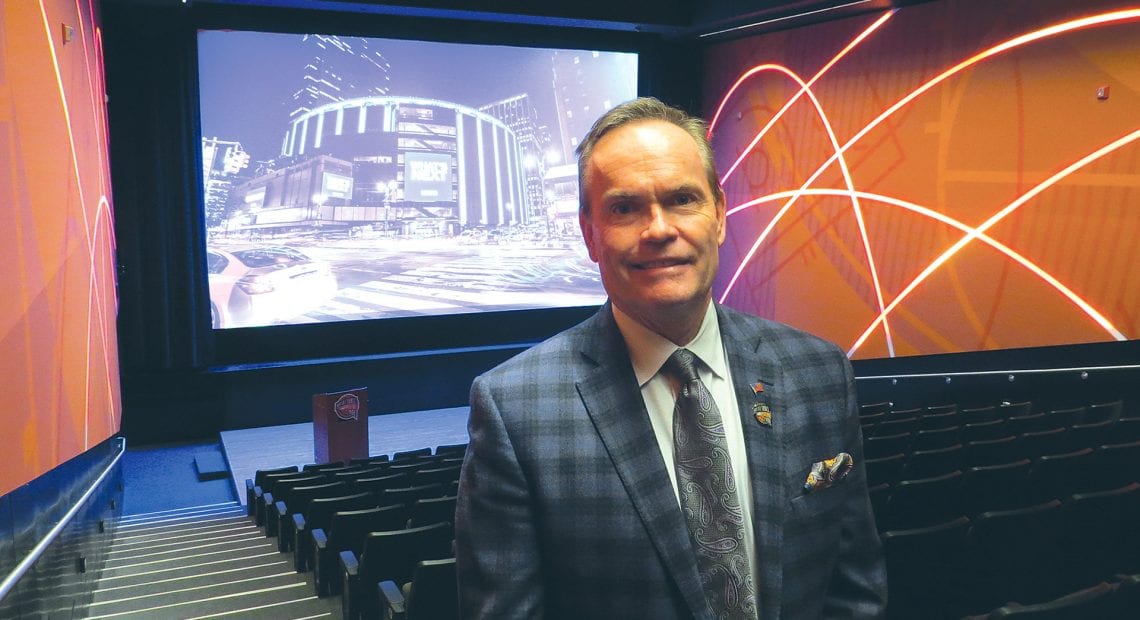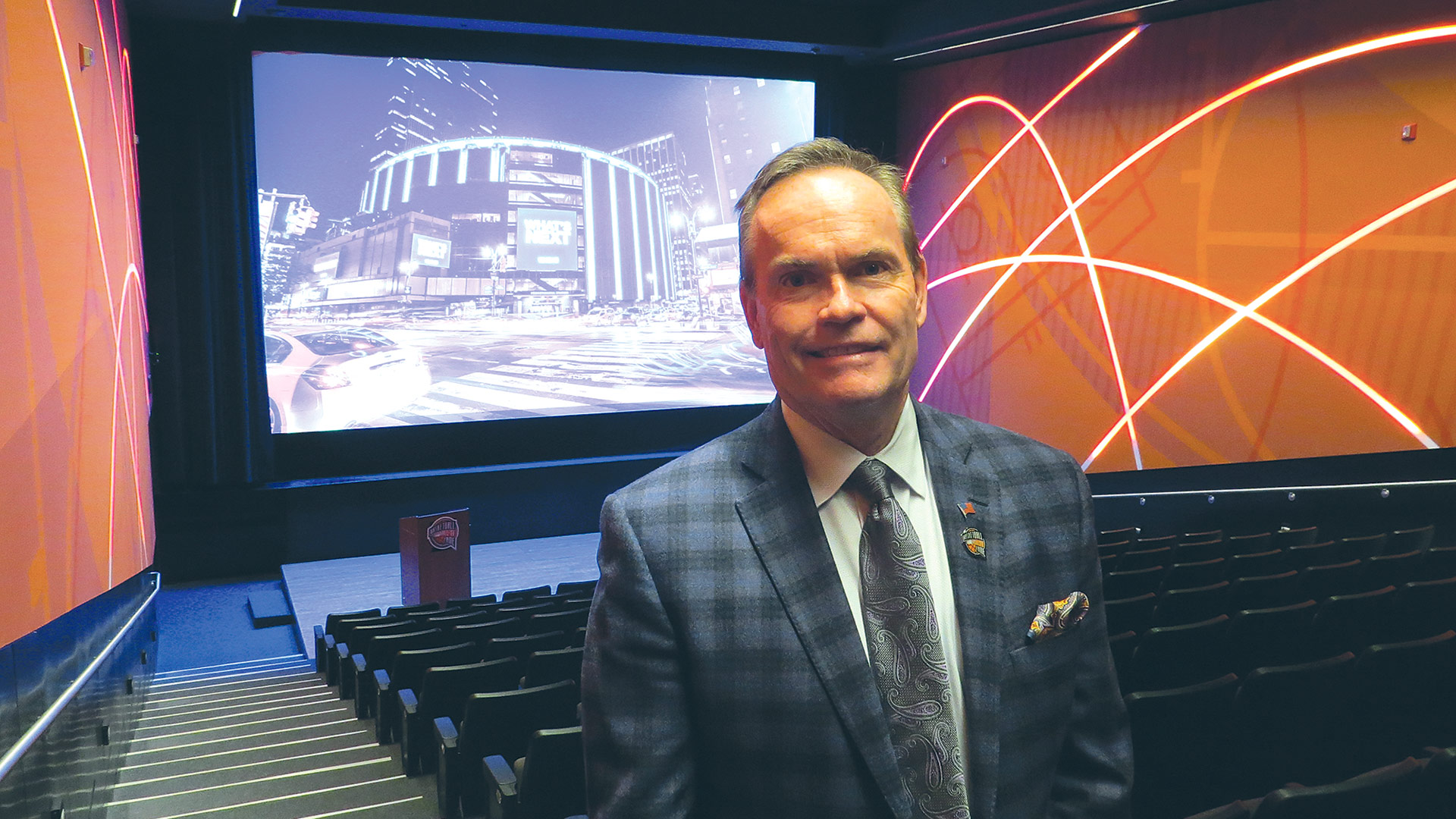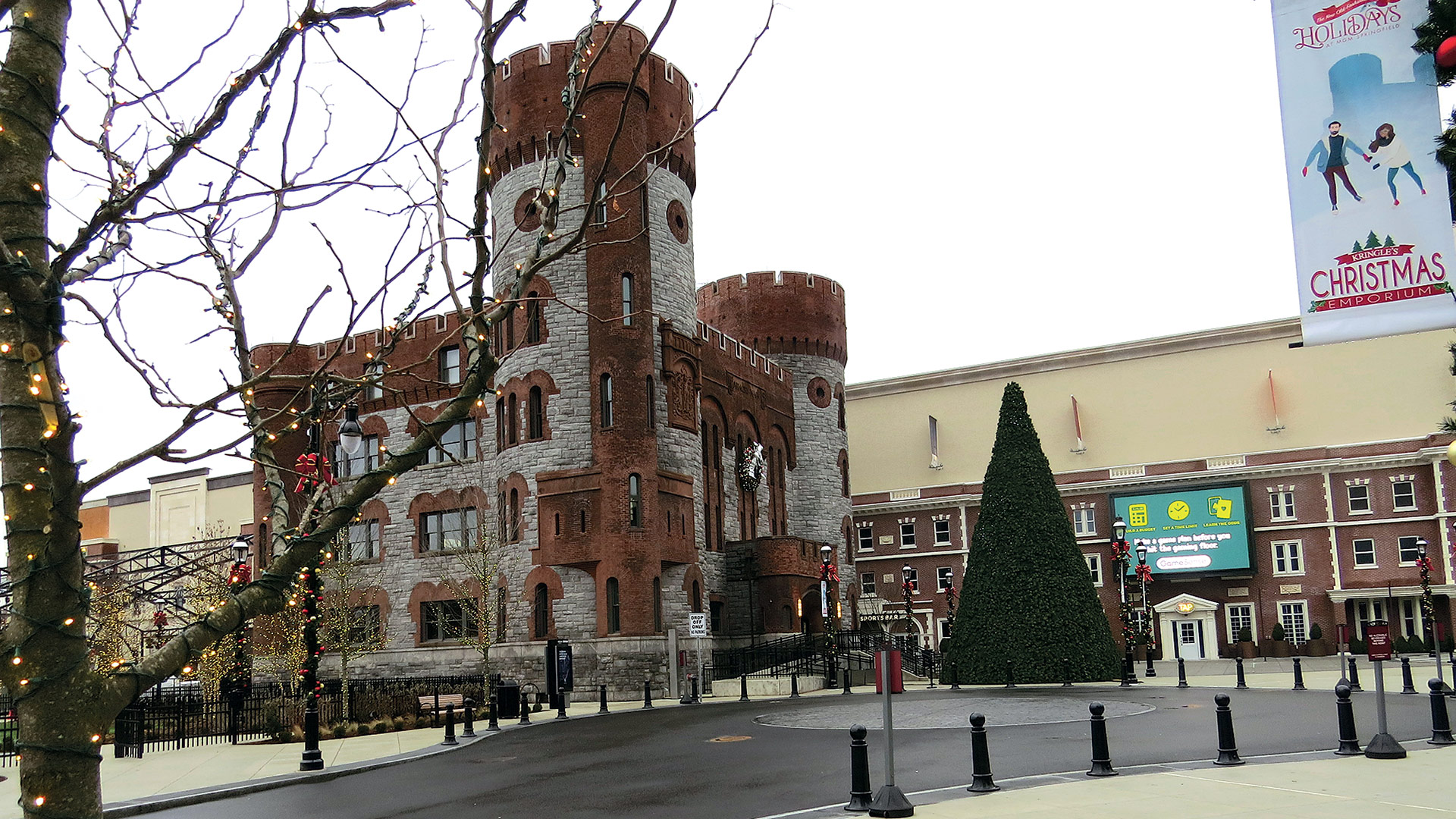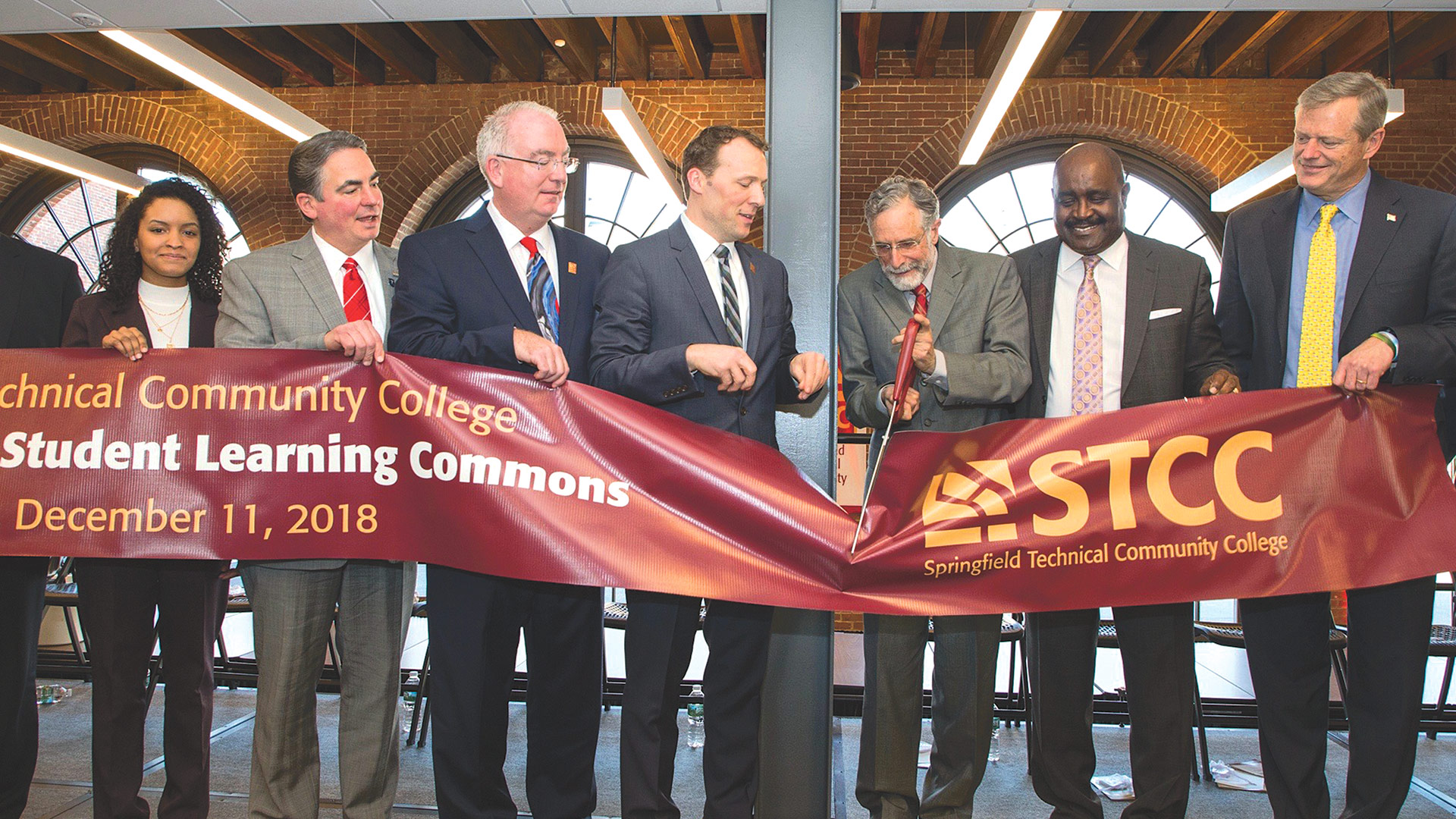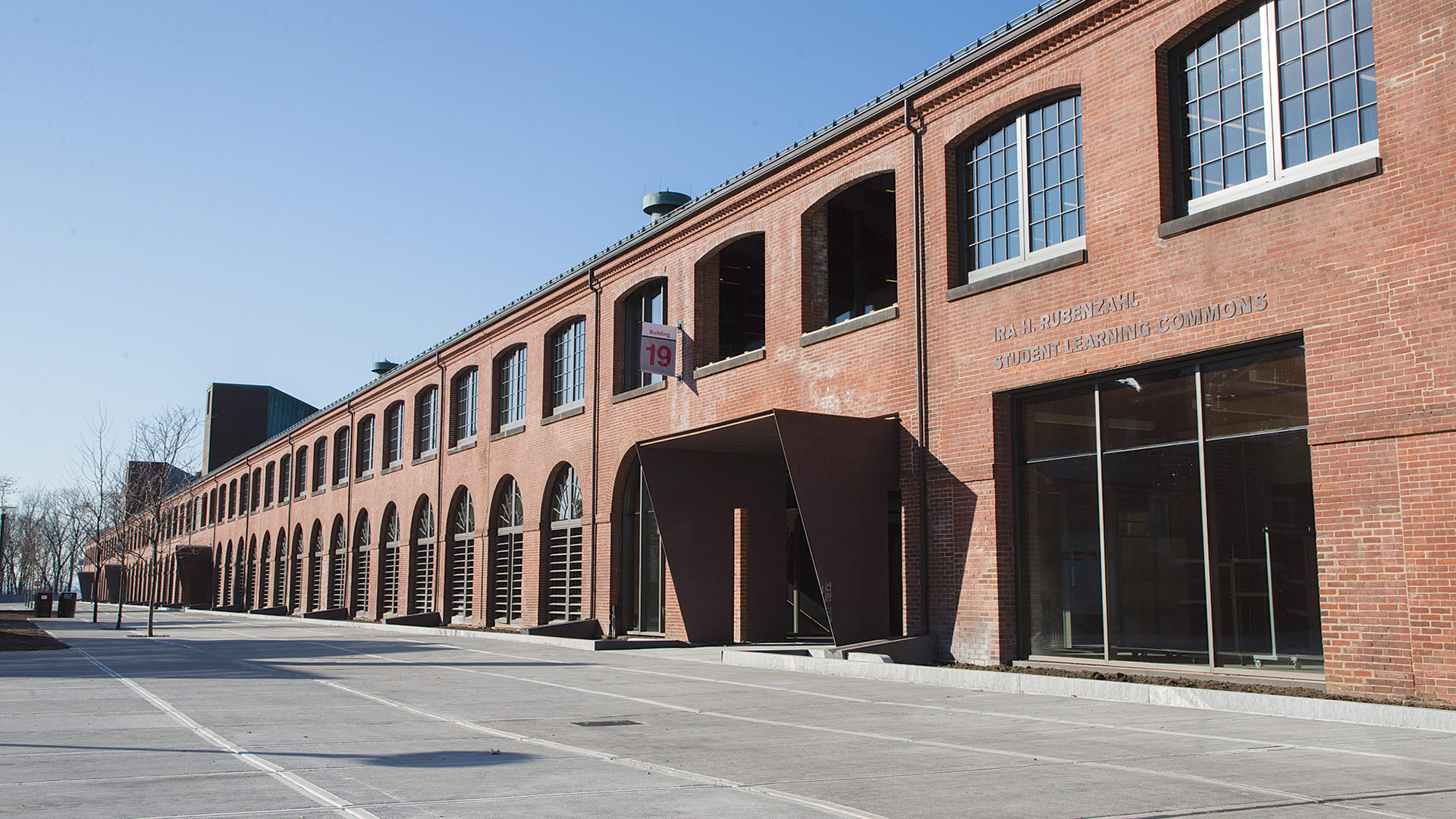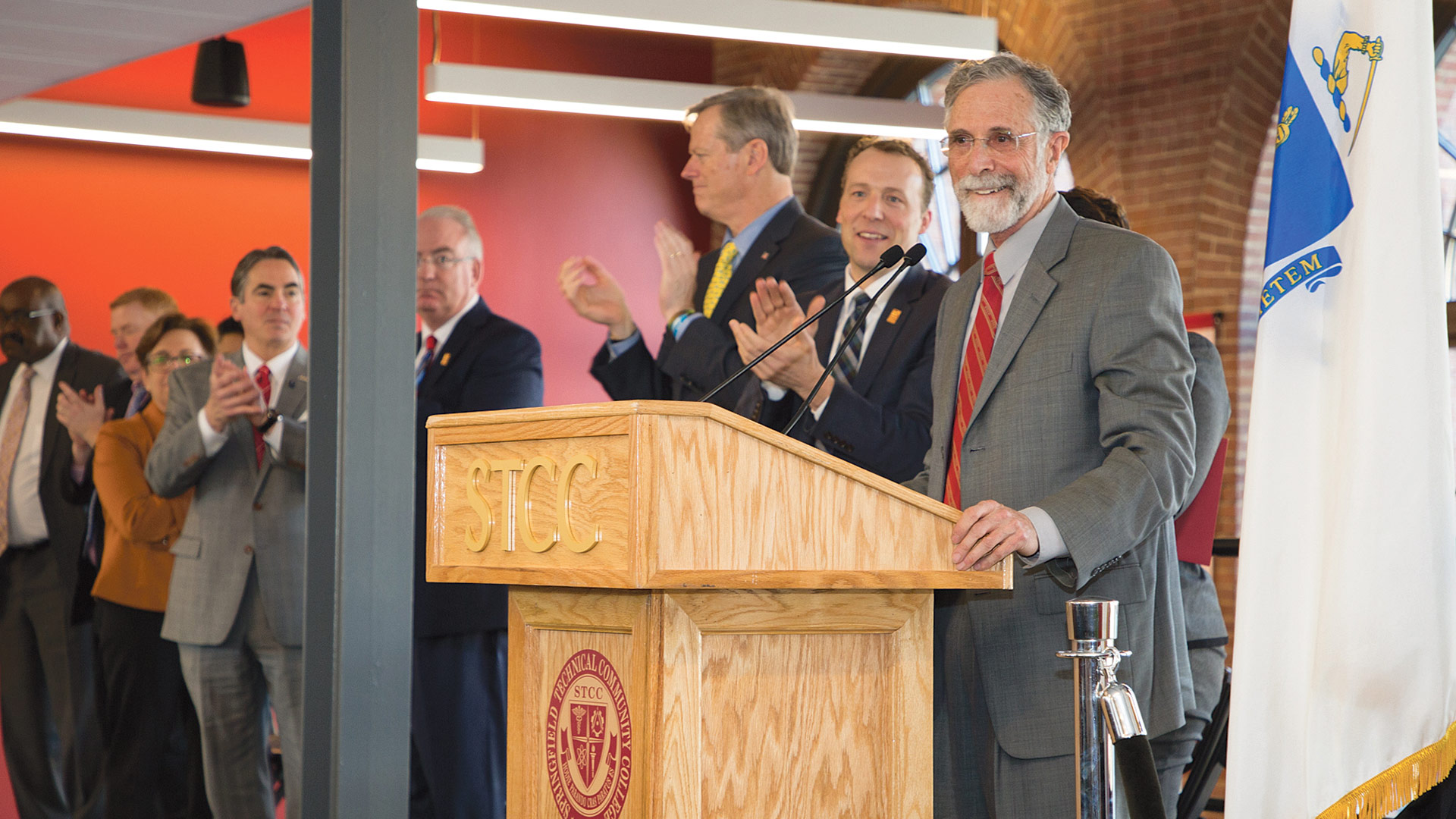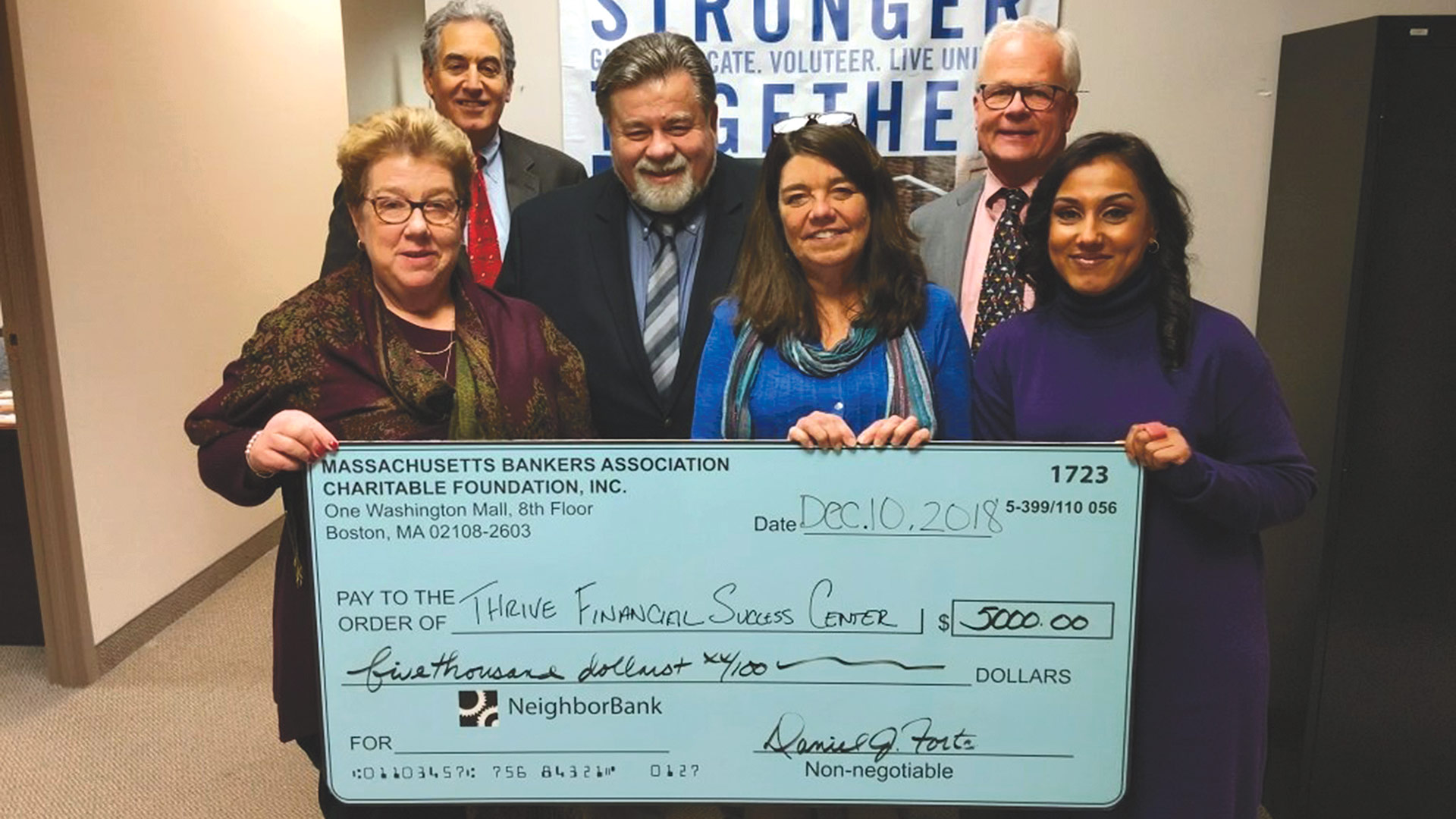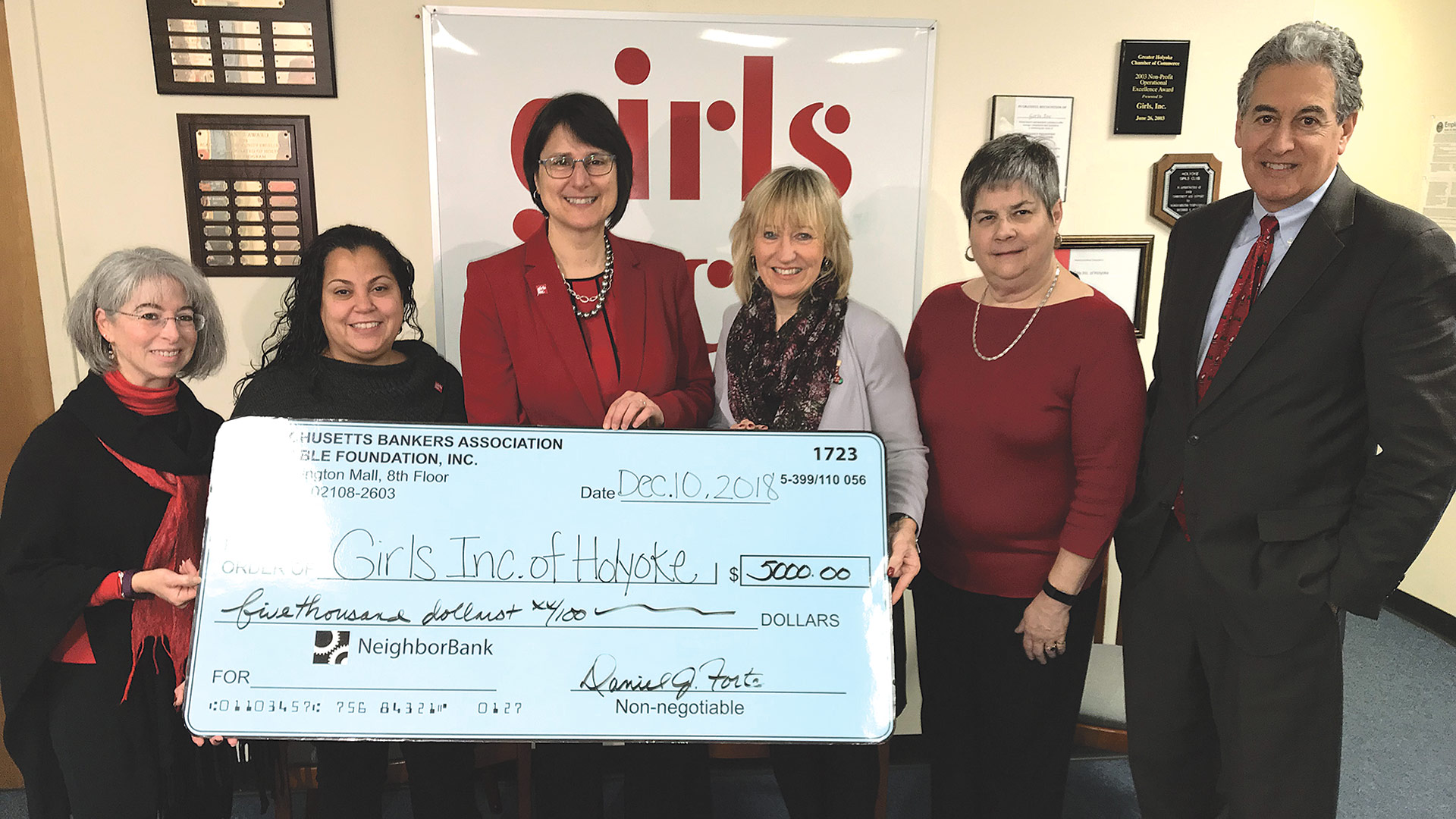The Employment Picture
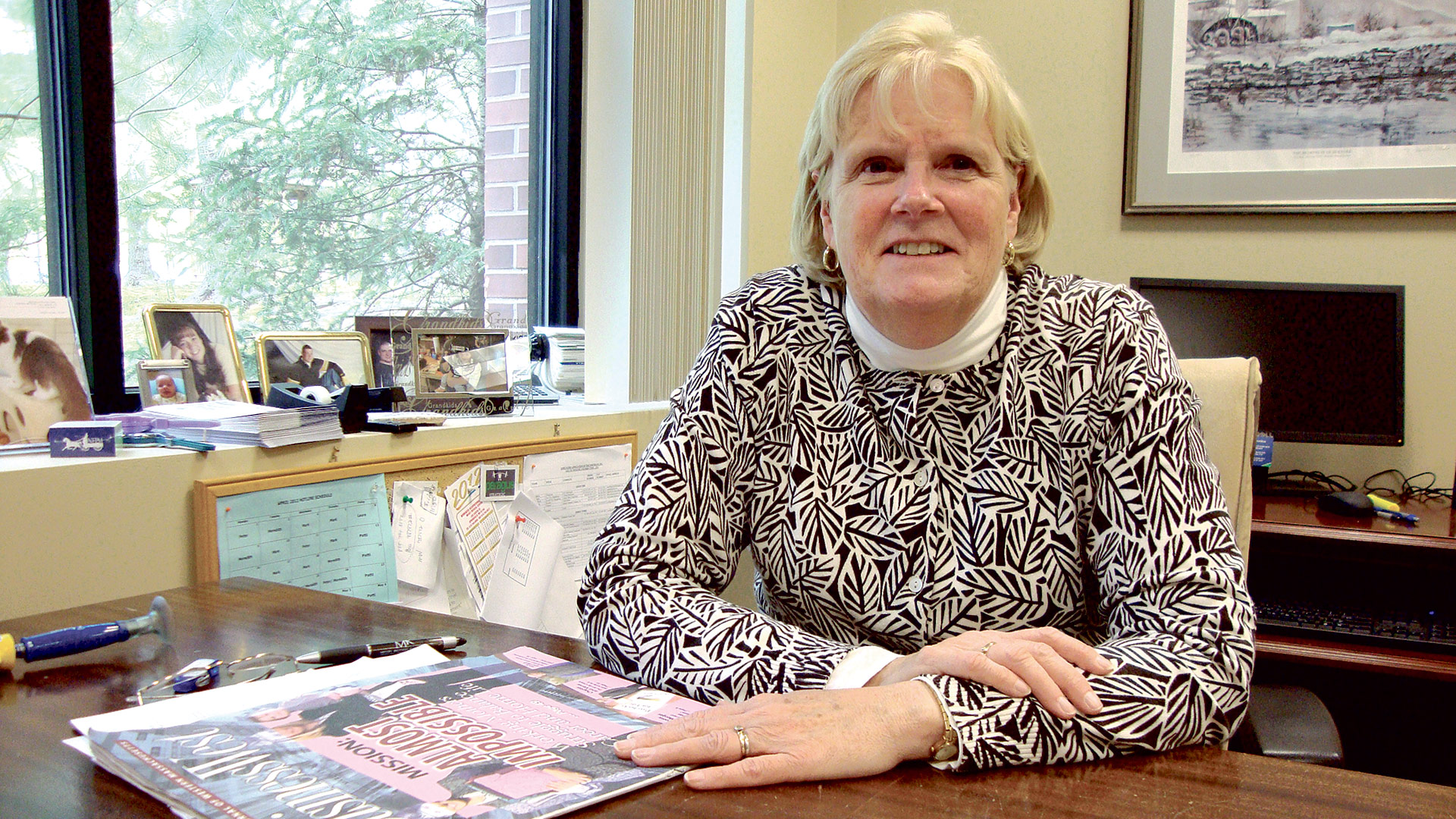
As the job market tightens, Meredith Wise says, it becomes an employees’ market, with business owners increasingly having to pay for talent.
Meredith Wise says it’s probably not a recent addition to the business lexicon. But it was certainly new to her when she heard it the first time.
‘Ghosting’ is the phrase in question, and it refers to a situation where an individual applies for a job, is given an offer, accepts the offer, passes a drug test, is given a starting date, accepts the starting date, and when it comes … he or she just doesn’t show up for work.
“That individual doesn’t feel the need or have the courtesy to call the company and say, ‘I’m not going to take the job; I have another opportunity that’s going to be better for me’; they just don’t show up,” said Wise, executive director of the Employers Assoc. of the NorthEast (EANE), adding that, when she first heard the term from one of her members, she thought it was an aberration and certainly not a common occurrence.
Suffice it to say that she has been corrected on that viewpoint at several of EANE’s monthly member roundtables over the past year or so.
“When I first brought it up I said, ‘oh, this can’t really be happening — this isn’t something people would do,’” she recalled, flashing back several months. “I expected pushback and people saying, ‘no, that doesn’t happen to me.’ Instead, there was agreement around the table that it is happening — a lot.”
Wise said this pattern of ghosting, which is happening in many sectors and at all rungs of the ladder — from entry-level service jobs to senior engineering positions — might be a form of role reversal when it comes to the employment process, and a very clear sign that this is an employees’ market.
“When employers get applicants, there are many times when they don’t communicate back to people; they don’t say, ‘thanks for applying, but we don’t have anything at this time,’” she explained. “As a candidate, you feel your résumé or your application has gone into a black hole. And it almost feels to me like the candidates are turning the tables on employers and saying, ‘I’m not going to get back in touch with you, and I’m just going to do what’s best for me.’”
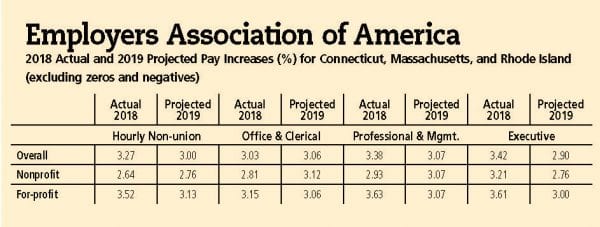
Bryan Picard, president of Springfield-based Summit Careers Inc., agrees with Wise’s take and can certainly verify the overall tightness of the market, at least through most of this year — and the ghosting phenomenon.
To capture it, he cited the example of a company in Northampton trying to fill a basic warehouse position, with the emphasis on trying.
“We had to fill that same position six or seven times,” he explained, “because the first five people just didn’t show up for the job, and this is a position paying $5 an hour more than the average. There were so many opportunities for strong candidates to go somewhere else, they just didn’t show up.”
Finally, Summit decided to send several people to this client at the same time with instructions to pick the one it liked most — on the theory that at least one of them would show. And a few did, actually.
Meanwhile, the firm has strongly advised its clients to condense the overall hiring process — especially the period between when one is offered a job and when one starts — to hopefully keep would-be employees from becoming ghosts.
“The reality is that minimum wage went to $12 an hour four months ago. There are still companies paying $11 an hour, but the vast majority of them are paying more than what the minimum wage is because they know it’s required.”
All this is part of life in the current employment market, one that is expected to continue into 2019, in most ways and in most sectors — although Picard is seeing some signs of a slowdown in manufacturing (more on that later), and economists, in general, are projecting that the pace of expansion will slow in the year ahead.
“Overall unemployment numbers should stay steady into the first quarter of 2019, said Larry Martin, director of Business Services and Market Research for the MassHire Hampden County Workforce Board, noting that unemployment was quite low — 4% to 5% — across the region this year. “We see things being steady in the first quarter without any major shifts or changes — we should remain fairly flat.”
Wise agreed, and said flat means more challenging times for employers. Indeed, for now and the foreseeable future, the laws of supply and demand clearly favor employees, she said, with business owners adjusting, out of necessity, with slightly higher wages and better benefits.
“Employers are now sometimes having to buy talent,” she explained. “The applicant pool just isn’t what it was, and to lure people away from their current employer, they may need to be paying a few dollars per hour more to get people to come.”
For this issue and its Economic Outlook 2019, BusinessWest takes an in-depth look at the employment market and what employers can expect in 2019. For the most part, it is more of the same.
Work in Progress
Picard told BusinessWest that, although the minimum-wage hike to $12 an hour — the first in a series of incremental increases contained in the so-called ‘grand bargain’ legislation — doesn’t become law until Jan. 1, practically speaking, it went into effect long ago.
“The reality is that minimum wage went to $12 an hour four months ago,” he said. “There are still companies paying $11 an hour, but the vast majority of them are paying more than what the minimum wage is because they know it’s required.”
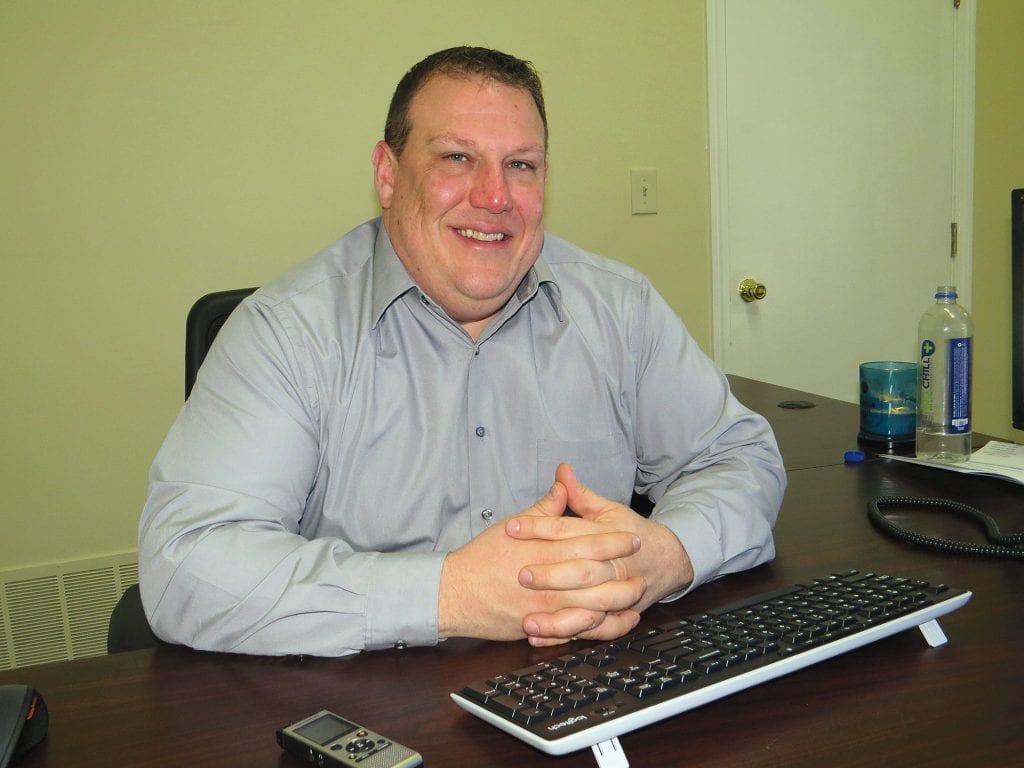
Bryan Picard says he’s seeing a slight slowdown in manufacturing, but overall, the job market remains tight.
And this upward movement on wages, at least on the lower end, is yet another sign of how tight the labor situation is and how this is an employees’ market. And while there is speculation on just how long it will stay that way, employers for the moment face a number of challenges, and are responding accordingly, said Wise, who said it starts with the applicant pool, or what passes for one, in many cases.
“Employers are finding real problems with the applicants — they’re just not getting the volume of applicants they used to get, and the people they are getting just don’t have, in many cases, the qualifications and the skills that they’re looking for.”
But the problems certainly don’t end there, Wise said, adding that a huge issue for employers is finding applicants that can pass a drug test. The percentage of applicants that can’t would surprise some, but certainly not anyone working in human resources today, she told BusinessWest.
And if they do have the skills and they can pass a drug test … that generally means that they have many opportunities to choose from and are a solid candidate to become a ghost.
“When we would get candidates of a higher caliber that we would send on a temp-to-perm type of position, the challenge we saw was that they didn’t just have one job offer, they had five job offers,” said Picard. “And the companies that were really struggling starting bringing up their pay scales.”
Indeed, in response to all this, wages are increasing, but the pace of increase is still sluggish, as the chart on page 24 shows.
“I think wages are slightly higher, but wage growth is, overall, very slow,” said Wise, adding that there are several reasons for this, including the fact that retiring Baby Boomers are being replaced by less-experienced, lower-paid employees. Also, pay increases at the top end of wage earners are smaller increases for lower-wage earners, resulting in a lower overall average increase.
Beyond ‘paying for talent,’ to whatever extent they are doing so, employers are also responding to the tight market by altering their hiring policies and practices in some ways to keep good talent from going elsewhere and thus becoming ghosts.
“These trends are forcing employers to go back to what might be considered best practices,” Wise explained, noting, as one example, that after having an applicant accept an offer, the company in question is working harder to stay in touch with that applicant until they arrive for work, asking if they have any questions or just staying in communication with them.
Meanwhile, others are sending soon-to-be employees what she called “swag bags” or “swag items” such as a jacket with the company’s logo on it or a mousepad or other items as a gesture designed to show that the individual is valued.
Meanwhile, and as noted earlier, companies are being advised to condense the hiring process, especially the period between when one is hired and when that individual is slated to start work.
“If there is someone good that you want to put in a position, you put them in right away,” said Picard, adding that he went to far as to encourage clients to skip or accelerate the interview the process, hire promising candidates, and essentially interview them after they were hired.
Hire Power
If all this seems a world apart from what was happening only a few years ago, it is, said Picard, adding that conversations he had with colleagues in this field from across the country revealed that this past year, and especially this past summer, was among the most difficult times anyone could remember when it came to securing qualified help for clients.
“They said it was the worst summer they’d seen in … forever, or at least 50 or 60 years, and that’s understandable with unemployment being at an all-time low,” he said, adding that, while things were not that bad in this market, employers in many markets struggled to find and keep talent.
That’s certainly been the case with precision manufacturing, one of the specific sectors that Summit specializes in.
“Every single company out there right now is looking for CNC machinists,” he told BusinessWest. “Many have more work than they can get out the doors, or more sales orders than they have people to fill them.”
“Employers are finding real problems with the applicants — they’re just not getting the volume of applicants they used to get, and the people they are getting just don’t have, in many cases, the qualifications and the skills that they’re looking for.”
The $64,000 question heading into the new year concerns how long things will stay this way.
As noted earlier, Picard said he has witnessed a slowdown when it comes to some segments of the manufacturing sector, and somewhat easier going when it comes to finding employees for those clients.
“I think things are changing; a lot of times, manufacturing is a leading indicator for what’s going to happen with the economy,” he explained. “The summer was very tight, but now, probably over the past month and a half, things were not as tight. We’re seeing very qualified, strong candidates that are coming through that four months ago … well, we would be begging for someone with half the talent that we’re seeing right now.”
Elaborating, he said he projects that 2019 will be “an interesting year” for his company and a less-busy one for some of his clients, especially those in manufacturing, and he comes to that conclusion mostly by comparing numbers from the fourth quarter this year compared to last year.
“In the fall of 2017, we were very busy, and I brought on someone to help in November,” he recalled. “I said, ‘this is our slowest time of the year, it’s a great time to come on, we’ll be able to do some coaching, things will be nice and easy.’ About January, she said, ‘when is it going to slow down again?’ because it never did.”
This year, it has, and Picard says it may be a sign of what’s to come in the year ahead.
Martin, meanwhile, is projecting essentially the status quo when it comes to the employment market — in manufacturing and most other sectors.
“For manufacturers, it’s going to be steady going, and they are going to need skilled help because of the individuals who are retiring,” he explained. “That’s not going to slow down whatsoever.”
He noted that the region essentially absorbed the arrival of MGM Springfield and its hiring of more than 2,000 people without major disruption to most sectors of the economy, even the broad culinary field, primarily because of proactive steps in anticipation of that seismic event.
“There was a lot of foresight and forecasting done in advance of MGM,” he explained. “There were a lot of new partnerships established, especially with the community colleges to help meet specific needs, such as those in culinary.
“Several sectors were impacted — culinary, retail, financial services, and others — but enough forecasting was done ahead of time to prepare for MGM’s arrival,” he went on. “And a lot of companies planned ahead and internally provided financial encouragement or other types of encouragement for existing staff.”
The challenge moving forward will be with the inevitable churn that the casino complex will experience, he went on, adding that while MGM, working with those partners he mentioned, had enough employees to get the doors open, it must now deal with ongoing turnover and the task of keeping workers in the pipeline.
Learning on the Job
As he talked about the job market and what may come in 2019, Picard concurred with Wise when she talked about many workers not exactly being courteous when it comes to taking better offers and instead becoming ghosts.
Likewise, he said all this amounts to a kind of payback, if you will, for how employers act when the laws of supply and demand are tilted in their favor.
He warned, however, that too much moving around and a great many lines on a résumé may come back to … well, haunt those ghosts when things change and the market is not so tight.
For now, though, it’s an employees’ market and will be for the foreseeable future, and employers looking to land good talent quickly and easily likely have a ghost of a chance of doing so.
George O’Brien can be reached at [email protected]
 2019 Difference Makers
2019 Difference Makers




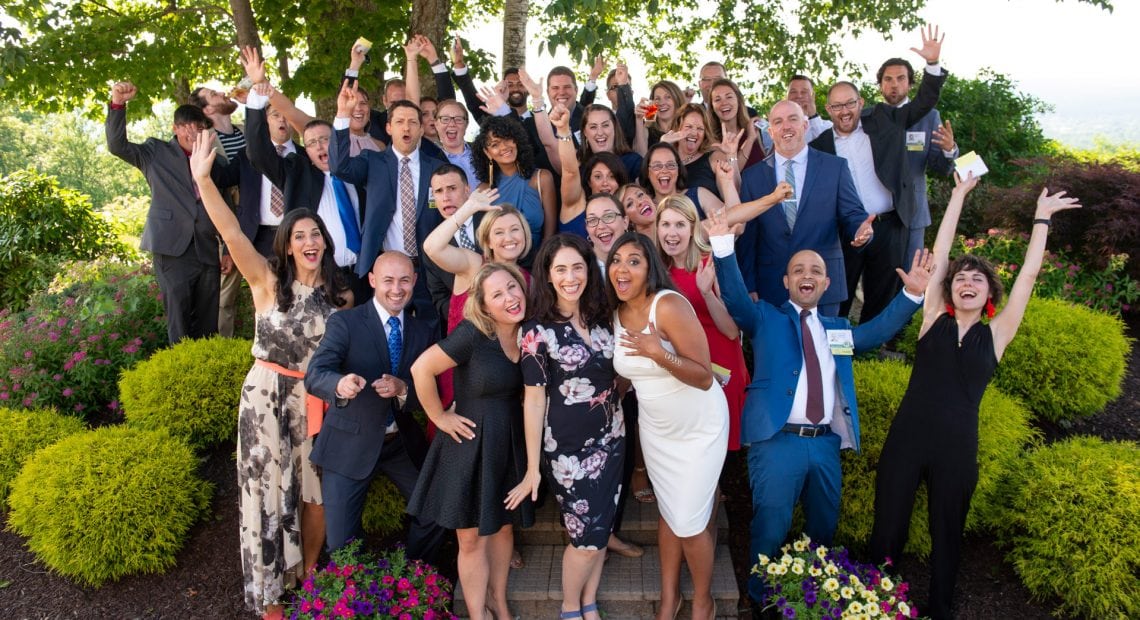
 BusinessWest is now accepting nominations for the 40 Under Forty Class of 2019, a celebration of young business and civic leaders in the Western Mass., and an undertaking in which our readership will play a pivotal role. Indeed, the process of selecting this region’s 40 Under Forty begins with nominations. And we urge you be thorough, because 40 Under Forty is a nomination-driven process; the background material submitted on a given individual is the primary source of information to be weighed by the judges who will score the candidates.
BusinessWest is now accepting nominations for the 40 Under Forty Class of 2019, a celebration of young business and civic leaders in the Western Mass., and an undertaking in which our readership will play a pivotal role. Indeed, the process of selecting this region’s 40 Under Forty begins with nominations. And we urge you be thorough, because 40 Under Forty is a nomination-driven process; the background material submitted on a given individual is the primary source of information to be weighed by the judges who will score the candidates.


